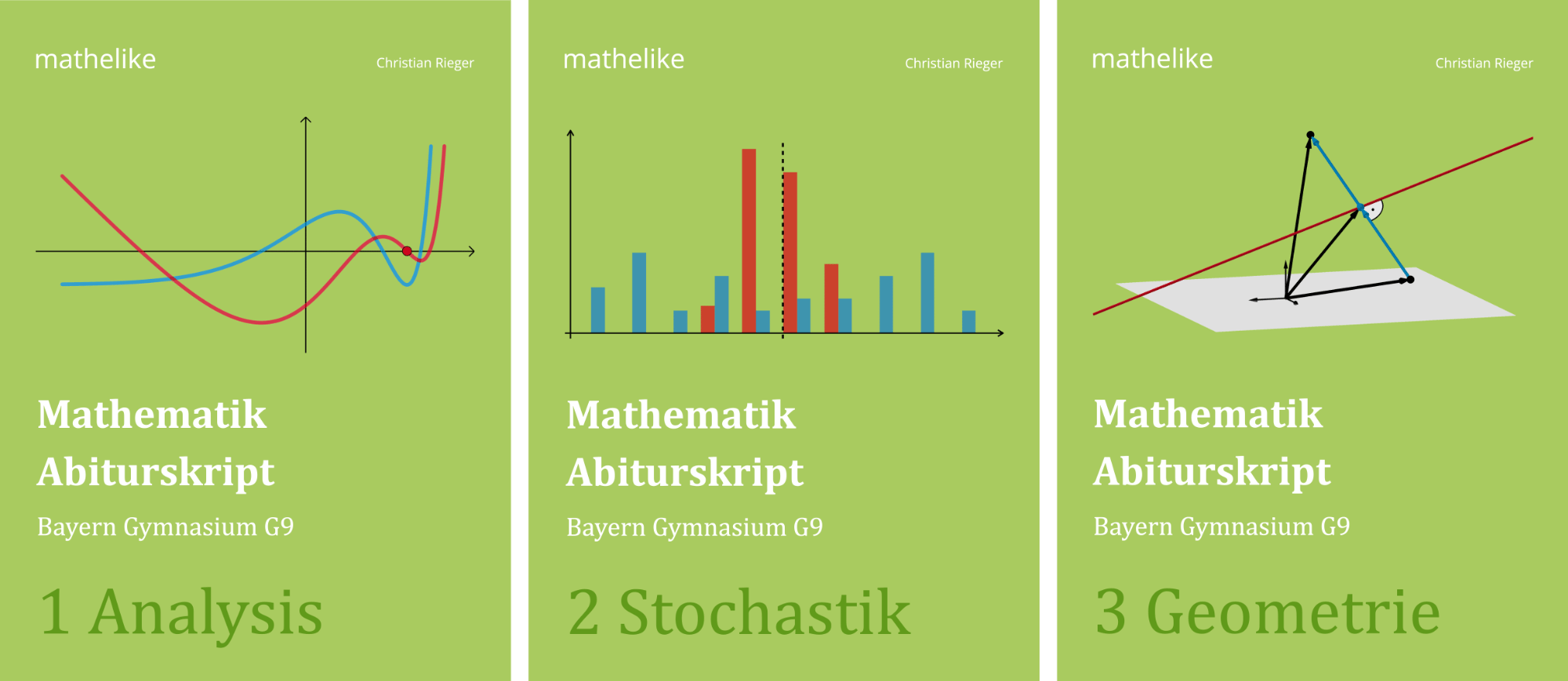Ermitteln Sie diejenige Stelle \(x \in D\), für die \(f'(x) = 2\) gilt.
(3 BE)
Lösung zu Teilaufgabe 1b
\[f(x) = \ln{(x - 3)};\; D = \;]3;+\infty[\]
Erste Ableitungfunktion \(f'\) bilden:
Hierfür wird die Kettenregel sowie die Ableitung der natürlichen Logarithmusfunktion und die Ableitung einer Potenzfunktion benötigt.
\[f(x) = \textcolor{#0087c1}{\ln{(\textcolor{#cc071e}{x - 3})}}\]

Ableitungen der Grundfunktionen
\[c' = 0 \enspace (c \in \mathbb R)\]
\[\left( x^r \right)' = r \cdot x^{r - 1} \enspace (r \in \mathbb R)\]
\[\left( \sqrt{x} \right)' = \frac{1}{2\sqrt{x}}\]
\[\left( \sin{x} \right)' = \cos{x}\]
\[\left( \cos{x} \right)' = -\sin{x}\]
\[\left( \ln{x} \right)' = \frac{1}{x}\]
\[\left( \log_{a}{x}\right)' = \frac{1}{x \cdot \ln{a}}\]
\[\left( e^x \right)' = e^x\]
\[\left(a^x \right)' = a^x \cdot \ln{a}\]
Faktorregel
\[\begin{align*}f(x) &= a \cdot \textcolor{#0087c1}{u(x)} \\[0.8em] f'(x) &= a \cdot \textcolor{#0087c1}{u'(x)}\end{align*}\]
Summenregel
\[\begin{align*}f(x) &= \textcolor{#0087c1}{u(x)} + \textcolor{#cc071e}{v(x)} \\[0.8em] f'(x) &= \textcolor{#0087c1}{u'(x)} + \textcolor{#cc071e}{v'(x)}\end{align*}\]
Produktregel
\[\begin{align*}f(x) &= \textcolor{#0087c1}{u(x)} \cdot \textcolor{#cc071e}{v(x)} \\[0.8em] f'(x) &= \textcolor{#0087c1}{u'(x)} \cdot \textcolor{#cc071e}{v(x)} + \textcolor{#0087c1}{u(x)} \cdot \textcolor{#cc071e}{v'(x)}\end{align*}\]
Quotientenregel
\[\begin{align*}f(x) &= \dfrac{\textcolor{#0087c1}{u(x)}}{\textcolor{#cc071e}{v(x)}} \\[0.8em] f'(x) &= \dfrac{\textcolor{#0087c1}{u'(x)} \cdot \textcolor{#cc071e}{v(x)} - \textcolor{#0087c1}{u(x)} \cdot \textcolor{#cc071e}{v'(x)}}{[\textcolor{#cc071e}{v(x)}]^{2}}\end{align*}\]
Kettenregel
\[\begin{align*}f(x) &= \textcolor{#0087c1}{u(}\textcolor{#cc071e}{v(x)}\textcolor{#0087c1}{)} \\[0.8em] f'(x) &= \textcolor{#0087c1}{u'(}\textcolor{#cc071e}{v(x)}\textcolor{#0087c1}{)} \cdot \textcolor{#cc071e}{v'(x)}\end{align*}\]
\[f'(x) = \textcolor{#0087c1}{\frac{1}{\textcolor{#cc071e}{x-3}}} \cdot \textcolor{#cc071e}{1} = \frac{1}{x -3}\]
Damit ergibt sich:
\[\begin{align*}f'(x) &= 2 \\[0.8em] \frac{1}{x-3} &= 2 &&| \cdot (x - 3) \\[0.8em] 1 &= 2 \cdot (x - 3) \\[0.8em] 1 &= 2x - 6 &&| + 6 \\[0.8em] 7 &= 2x &&| : 2 \\[0.8em] x &= 3{,}5 \in D\end{align*}\]


